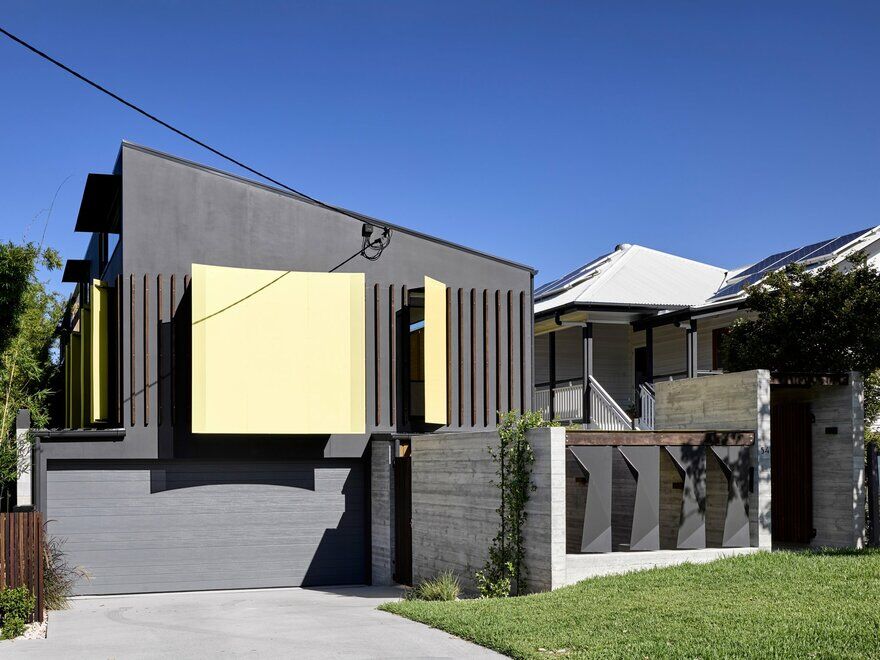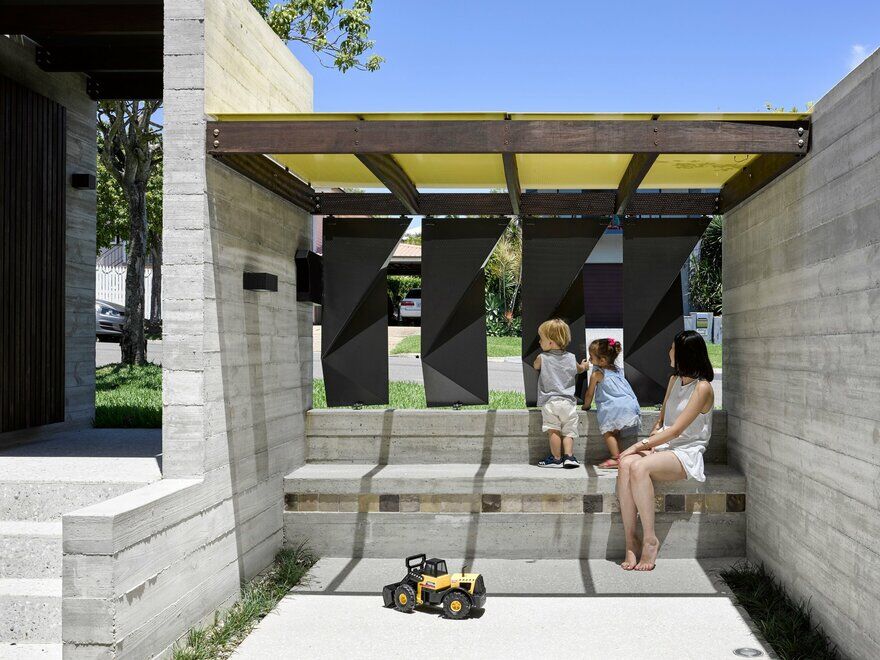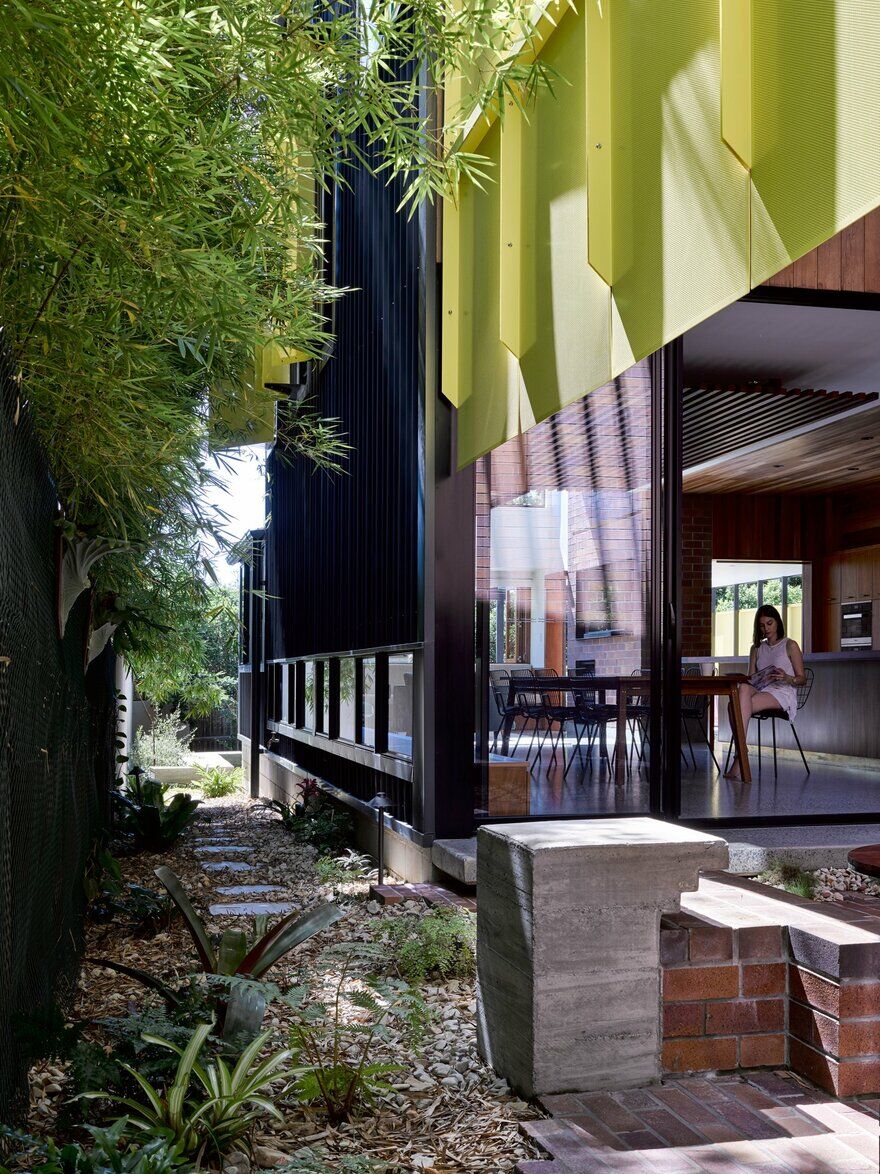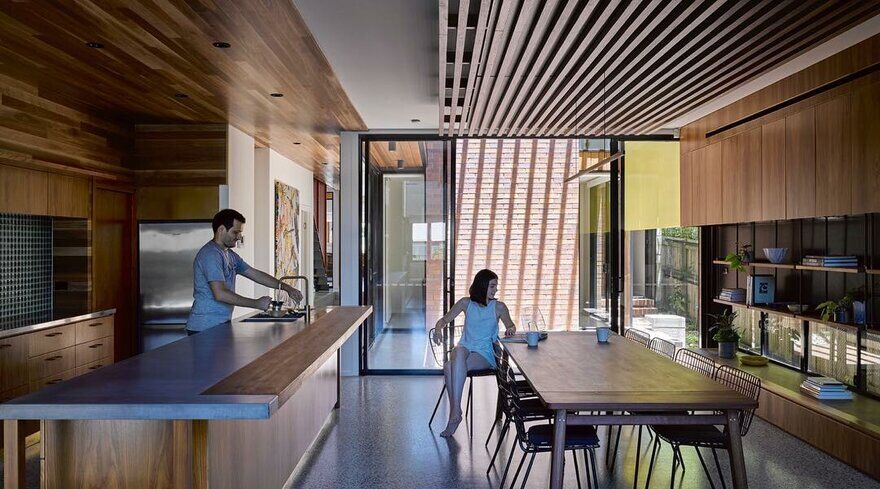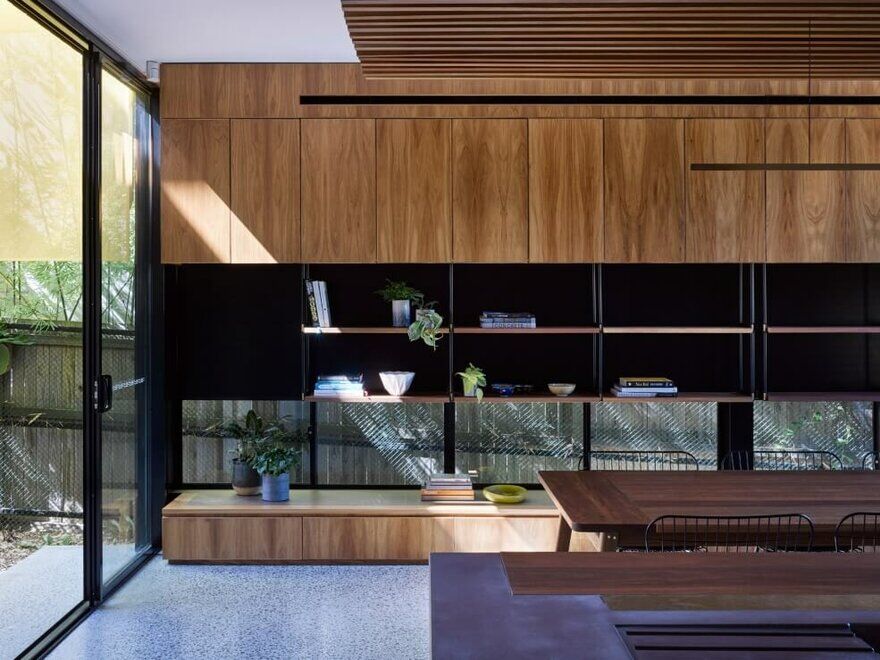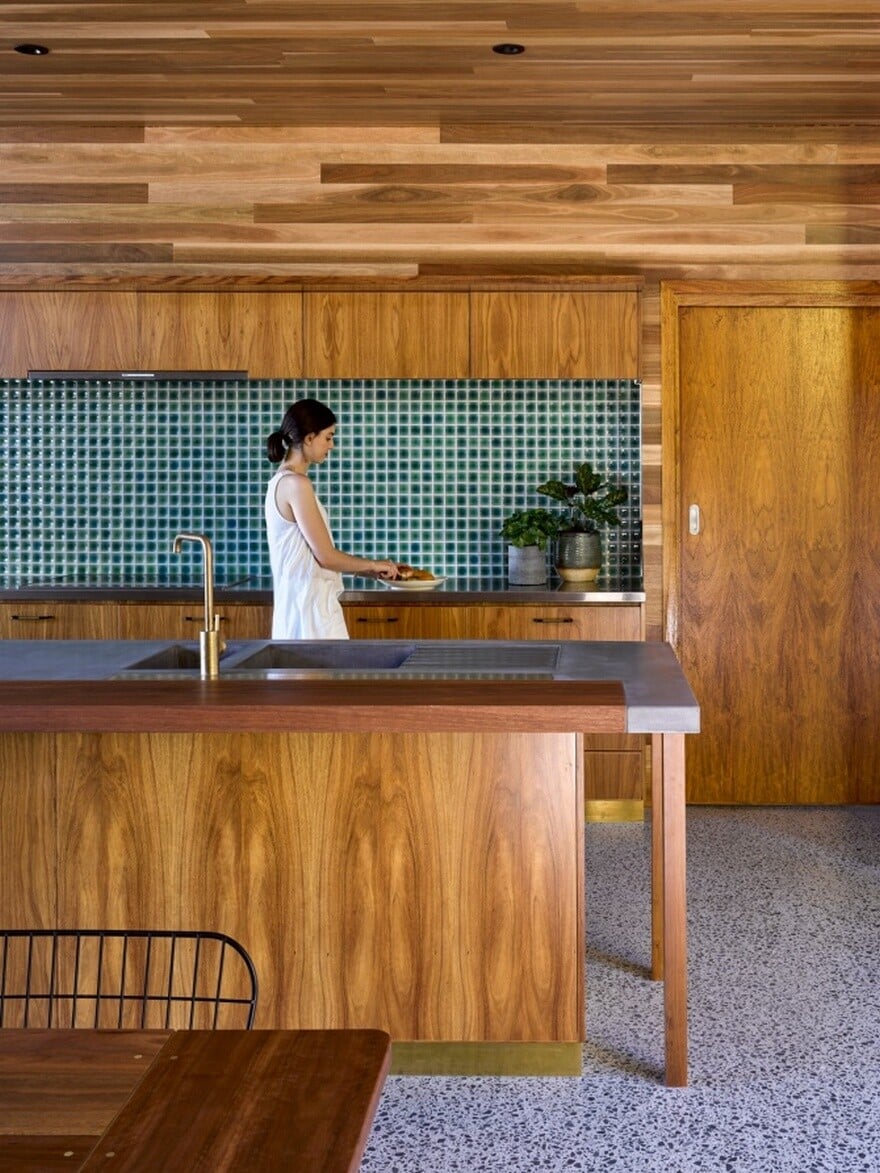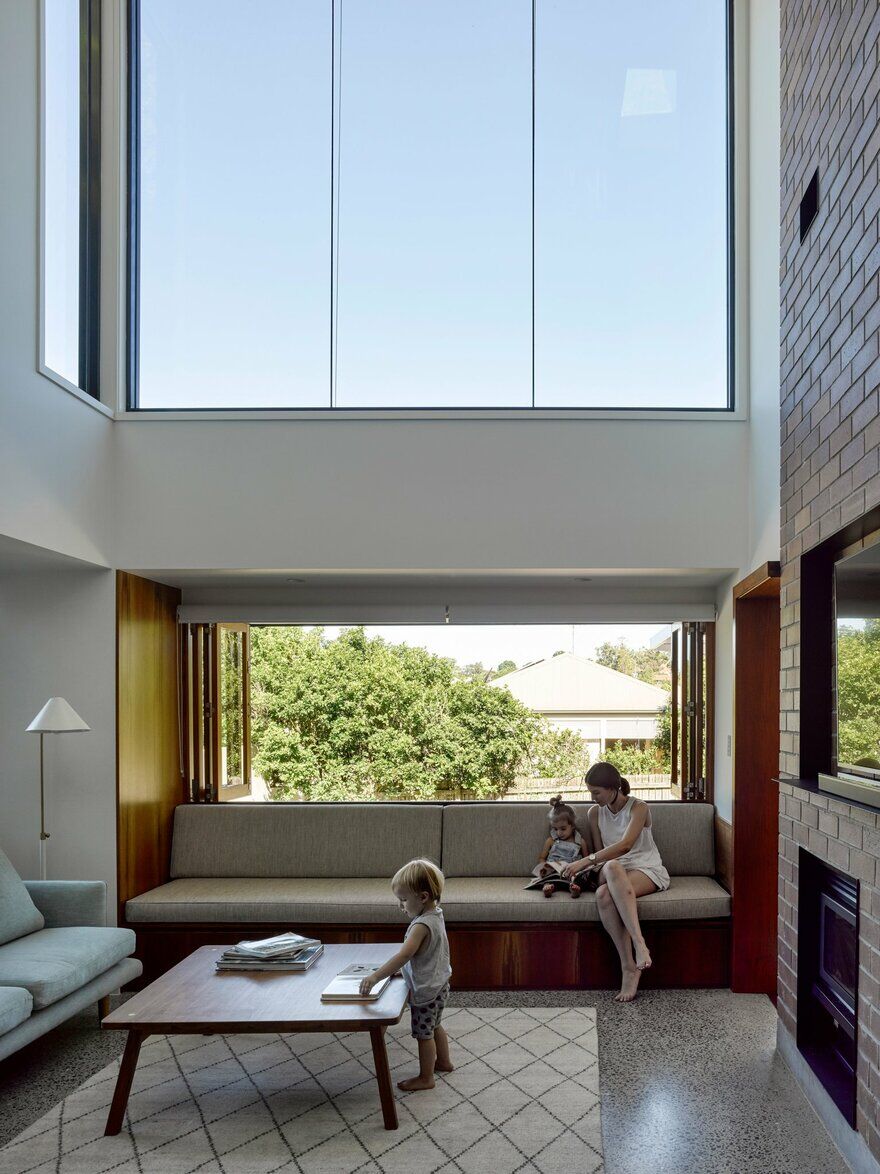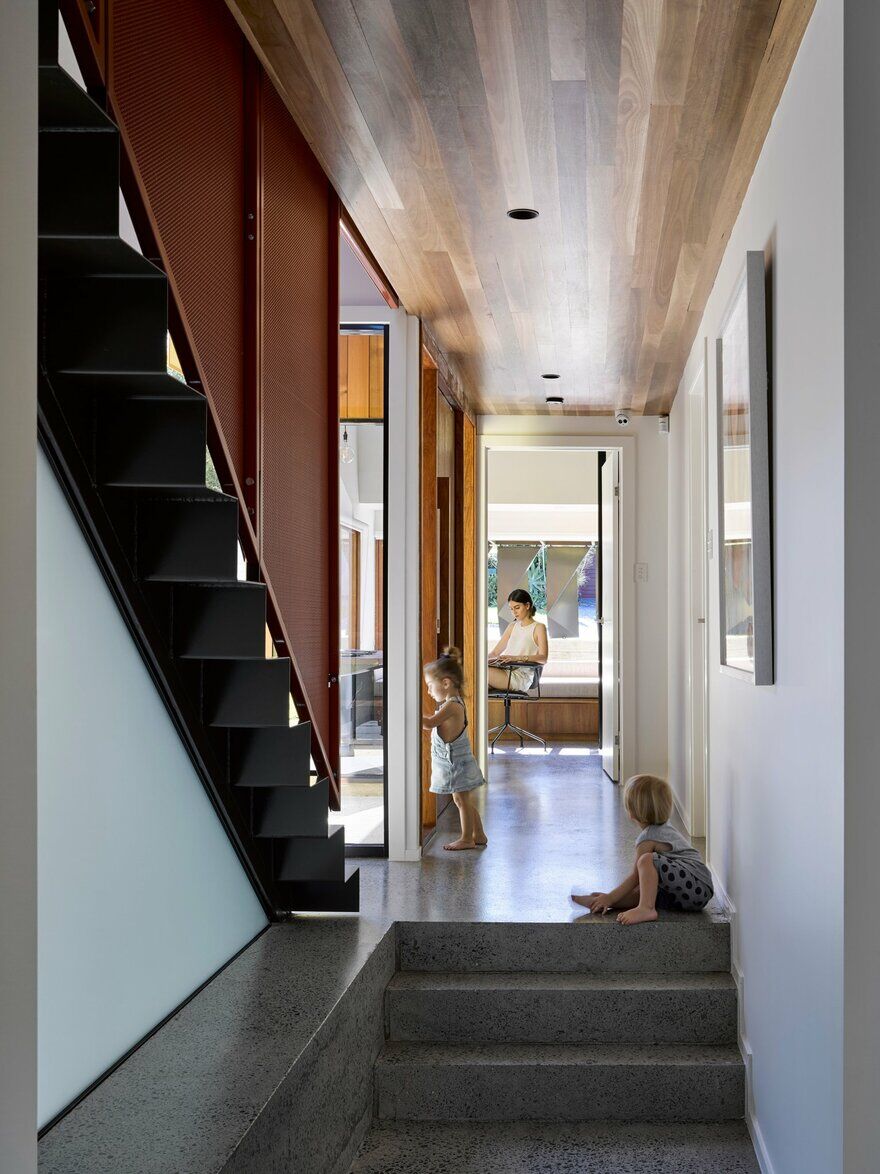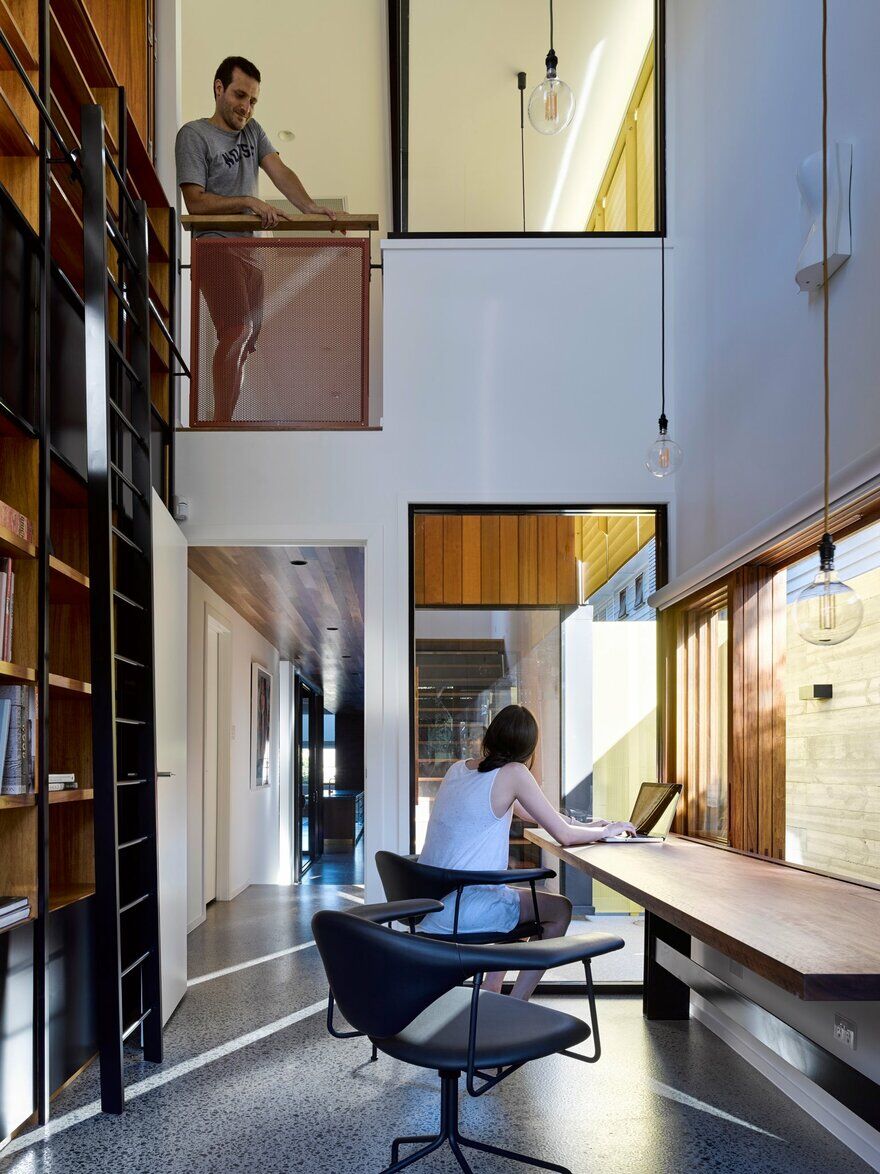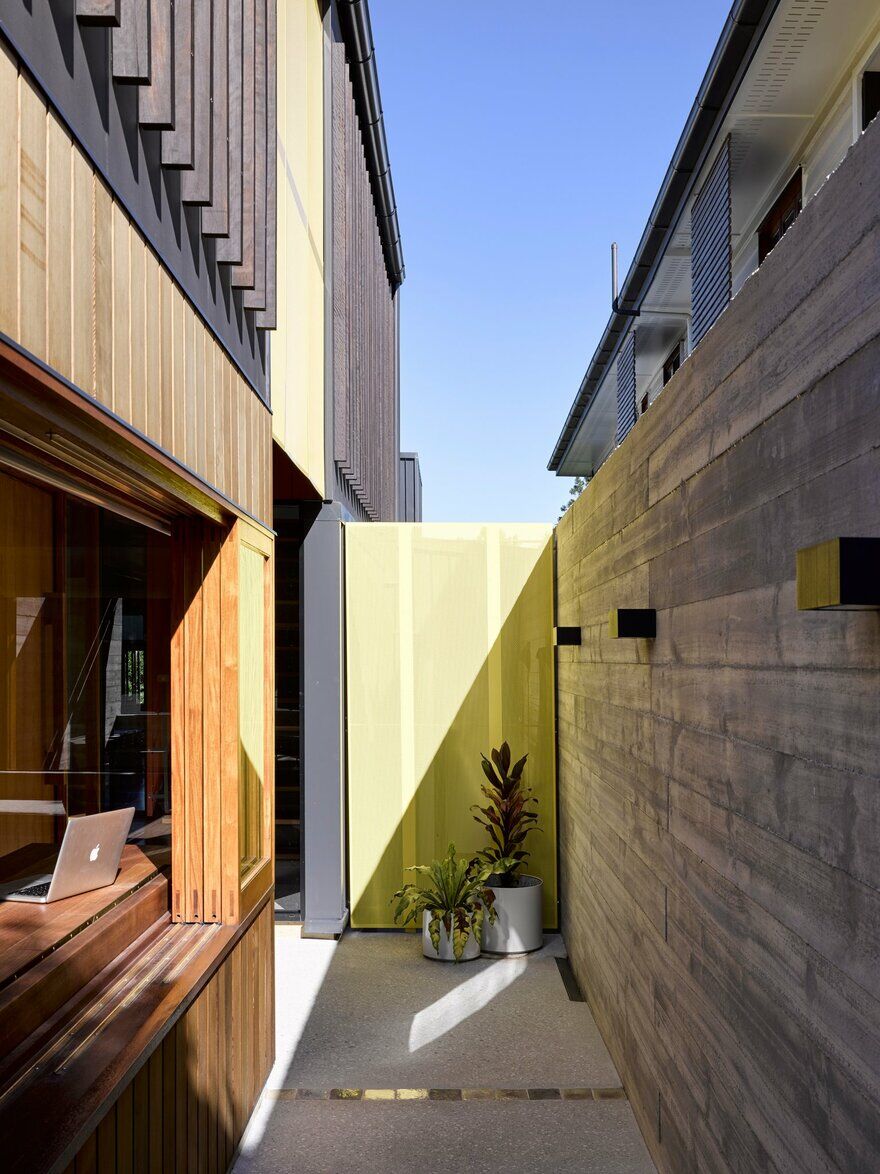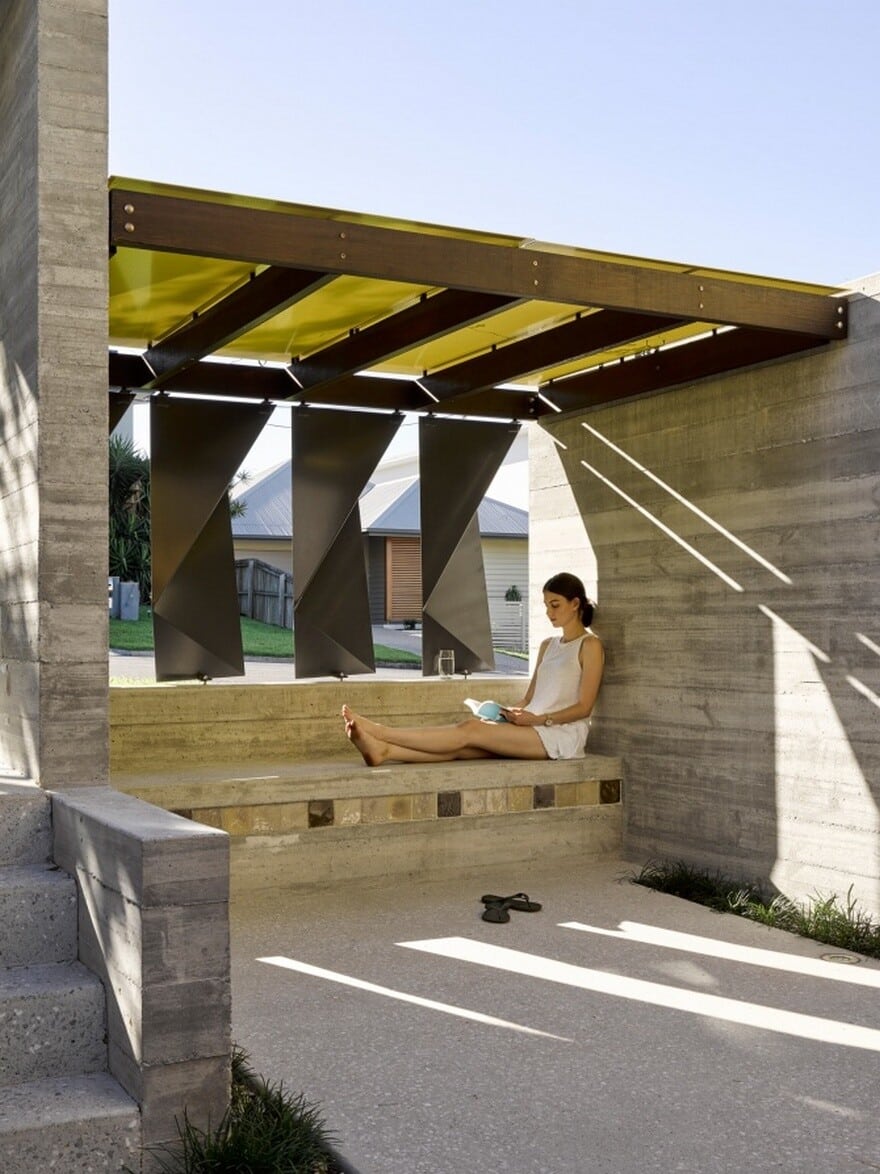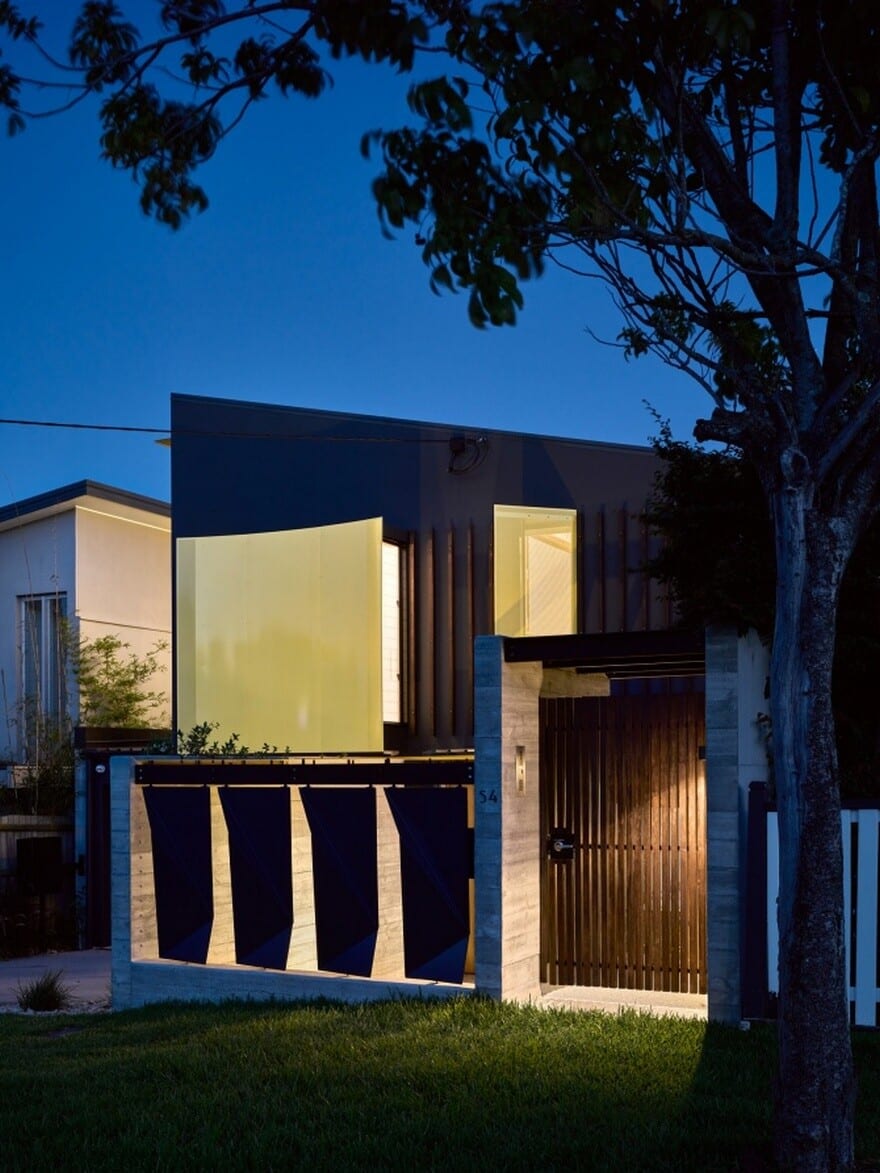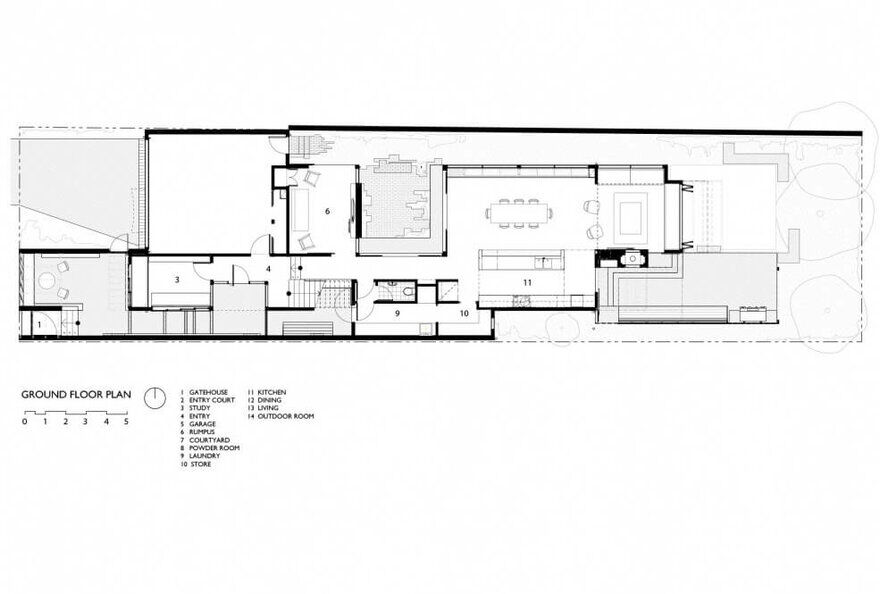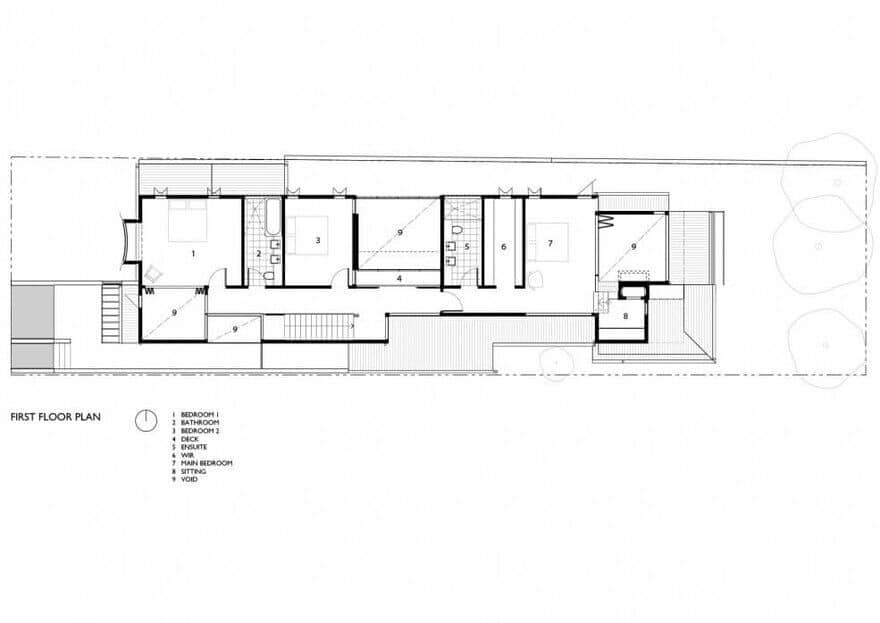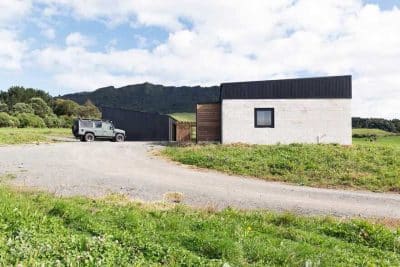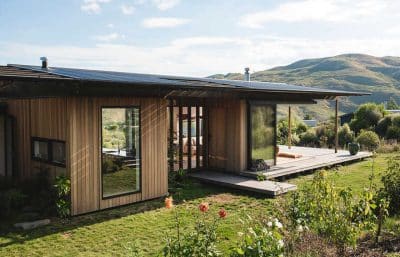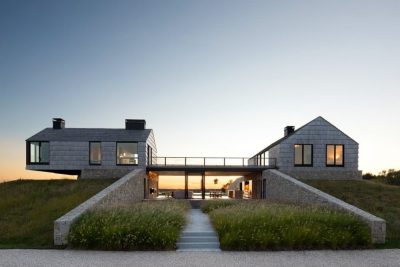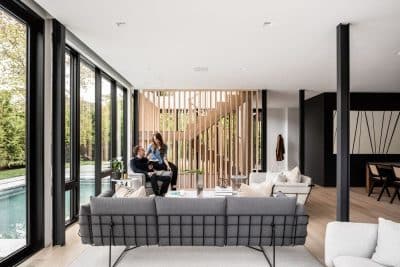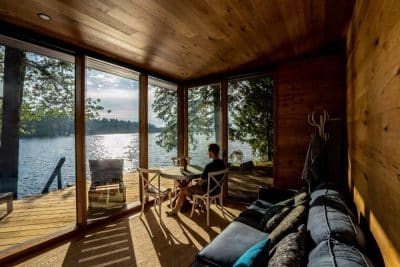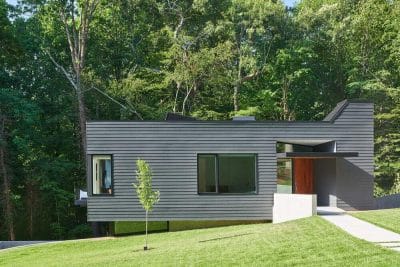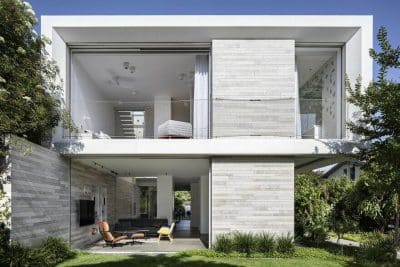Project: Tarragindi Steel House
Architects: Bligh Graham Architects
Location: Brisbane, Queensland, Australia
Year 2018
Photography: Christopher Frederick Jones
Tarragindi Steel House by Bligh Graham Architects has been shortlisted for the Queensland Architecture Award in the Residential Architecture – Houses (New) category.
The starting point for this project was a number of ‘givens’ including: small lot (10m frontage) with the long north side boundary significantly overlooked by a two storey house; a structural engineer client who had a family steel fabrication business; owner-builder; the Small Lot Code: and a partial architectural commission.
The brief was generic for a current suburban house – a simple home suitable for a young family, with a living room plus rumpus, ensuite, walk-in-robe, home office, and double garage. In this sense the project became about developing a scheme that could be a prototype for small lot housing with the challenge of getting what for us are ‘fundamentals’ despite a large briefed floor area – ie. climatically responsive, a range of spatial conditions and associated opportunities for occupation, flexibility (ie. home business), street engagement and a decent back yard/garden.
The primary strategy of the scheme was to establish a double height north facing courtyard in the middle of the plan to bring light and air into the centre of the house and create a dramatic and private outdoor room as an alternative external space to the more ‘public’ western and eastern ends that also were exposed to the summer morning and afternoon sun. In addition to the courtyard, double height internal spaces were positioned at both ends of the house – the result being one where there is a play of vertical spaces with the necessary horizontality associated with a long, small lot house – radically increasing the perceived sense of interior spaciousness.
The other principle strategy pursued was the extruded section with the roof pitching to the north to enable high level windows for light, winter sun and hot air venting whilst maintaining privacy. Low level north windows were then a repeated system of 2100mm high louvre banks with curved perforated steel screens to the outside that conformed with the code requirement for privacy screening. The use of perforated aluminium screens then becomes a repeated device externally and is carried inside for balustrading.
The use of aluminium and steel is wide in the project and reflects the owners preferred construction method and the economies achieved by leveraging his fabrication business. Beyond the perforated screens and all the floor, wall and roof framing, steel was utilised to create folded screens to the entry courtyard, rear pergola, internal stair, furniture and library ladder. The material palette was then enriched by the use of brick and off form concrete, internal timber lining, and custom made brass fittings – much of which was developed by us as the project evolved and the client got more and more excited about how the house was shaping up.
A bold use of colour externally enlivens the otherwise sober due-west facing street elevation, while the entry courtyard and home office engages with the side walk. While the thermal mass benefits of the concrete floor help stabilise the internal temperature, interior detailing was developed to improve the acoustics of the main living spaces. This was of importance to the clients with one having hearing issues.

